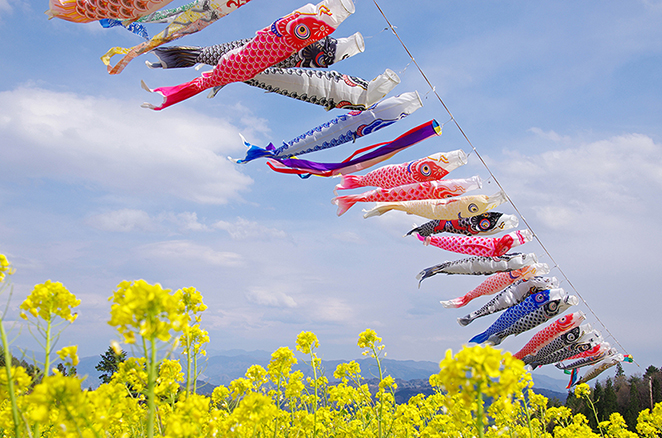Japan is a country rich in cultural traditions and holidays, each with its unique charm and significance. One such vibrant and heartfelt celebration is Children’s Day, observed annually on May 5th. This national holiday, known as “Kodomo no Hi” in Japanese, is a day dedicated to celebrating the health, happiness, and growth of children. Let’s delve into the history, cultural importance, and traditions associated with Children’s Day in Japan.
The Origins and Evolution of Children’s Day
Children’s Day has its roots in an ancient festival known as Tango no Sekku, which was originally a celebration for boys held during the fifth day of the fifth month in the lunar calendar. Over time, the festival evolved and was officially designated as a national holiday in 1948, with the intention of celebrating the happiness and well-being of all children, regardless of gender.
The Significance of Children’s Day
Children’s Day holds profound importance in Japanese society. It is a day when families come together to celebrate the innocence, potential, and joy that children bring into the world. The holiday underscores the value placed on nurturing the next generation, reflecting a deep cultural emphasis on family and community bonds.
Traditional Symbols and Decorations
Children’s Day is marked by several distinctive symbols and decorations that carry rich cultural meanings:
Koinobori (Carp Streamers):
One of the most iconic symbols of Children’s Day is the koinobori, or carp streamers. These vibrant, colourful windsocks are shaped like carp and are flown outside homes, schools, and public spaces. The carp is a symbol of strength and perseverance in Japanese culture, inspired by the Chinese legend of a carp swimming upstream to become a dragon. The koinobori represent the hope that children will grow up to be strong and resilient.
Kabuto (Samurai Helmets):
Another prominent decoration is the kabuto, or samurai helmet, which is displayed to symbolise the strength and bravery traditionally associated with boys. Families may display replicas of these helmets or complete sets of samurai armour as part of their celebrations.
Kintaro Dolls:
Kintaro dolls are also commonly displayed. Kintaro is a legendary child hero known for his incredible strength and bravery, and his figure serves as an inspiration for children to grow up healthy and strong.
Chimaki and Kashiwa-mochi:
Traditional foods are an integral part of the celebrations. Chimaki, a type of rice dumpling wrapped in bamboo leaves, and kashiwa-mochi, sweet rice cakes filled with red bean paste and wrapped in oak leaves, are typically enjoyed. The oak leaves symbolise prosperity and growth, as oak trees do not shed their old leaves until new ones have grown.
Activities and Celebrations
Children’s Day is filled with various activities and festivities designed to honour and entertain children. Families often engage in the following traditions:
Flying Koinobori:
Families raise koinobori outside their homes, with each streamer representing a family member. The largest carp, usually black, symbolises the father, the red one represents the mother, and the smaller, colourful carp signify the children. Watching these vibrant streamers fluttering in the breeze is a joyous sight that symbolises the family’s hopes for the children’s bright futures.
Displaying Samurai Armor and Helmets:
In addition to decorating with koinobori, families often display traditional samurai helmets and armour inside their homes. These displays are intended to instil qualities of courage and strength in their children.
Visiting Shrines and Temples:
Many families visit shrines and temples to pray for their children’s health, happiness, and prosperity. It is a time for reflection and expressing gratitude for the blessings of children.
Participating in Community Events:
Communities organise various events such as parades, festivals, and cultural performances. These events provide an opportunity for children to engage in traditional games, enjoy local foods, and participate in arts and crafts activities.
Enjoying Special Meals:
Families prepare and share special meals together. Traditional dishes, including those made with carp and seasonal ingredients, are served to celebrate the occasion. It is a time for family bonding and creating cherished memories.
Conclusion
Children’s Day in Japan is a heartfelt celebration that reflects the nation’s deep appreciation for its youngest members. The holiday, with its rich traditions and vibrant symbols, emphasises the importance of nurturing and cherishing children. For visitors to Japan, experiencing Children’s Day offers a unique insight into the country’s cultural values and the joy of celebrating childhood. Whether you are watching the colourful koinobori dance in the wind or savouring the sweet taste of kashiwa-mochi, Children’s Day is a beautiful reminder of the importance of family, community, and the boundless potential of the next generation.











